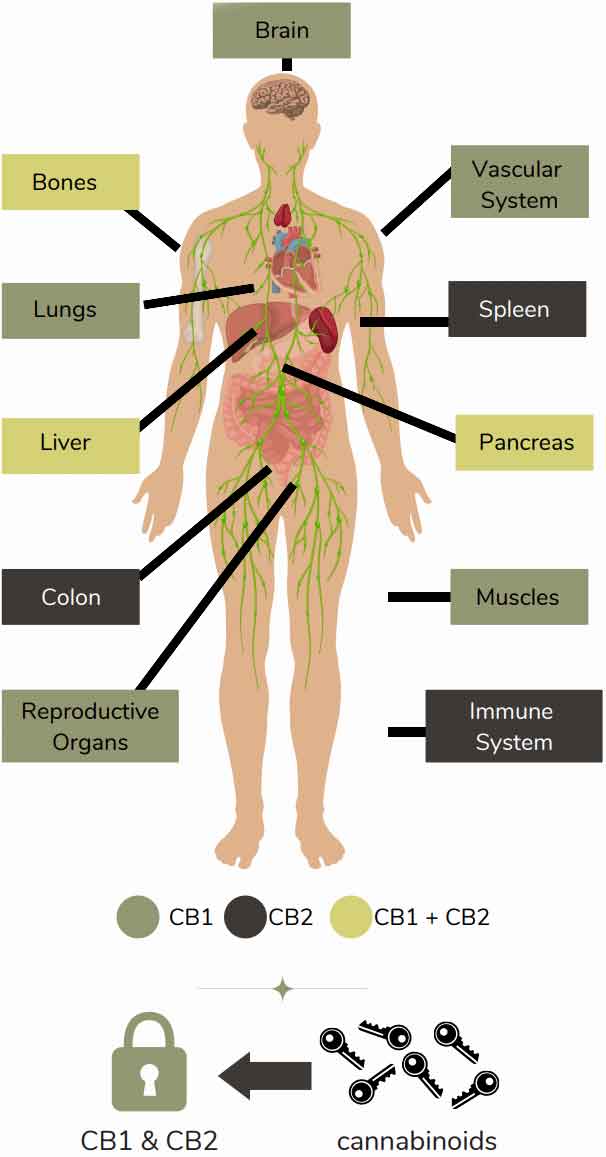Download our Educational Brochure
The information below is also provided in a printable PDF version that can be used for cannabis education purposes:
The Importance of Patient Cannabis Education
Understanding the science behind medical cannabis is essential to effective patient education. This knowledge is crucial for both patients and healthcare providers and can lead to more effective outcomes in patient care.
Medical cannabis has been used to treat various health conditions, including chronic illnesses like cancer, diabetes, and heart disease. For patients to make informed decisions about their treatment options and engage effectively in their care, they need to understand how medical cannabis works, its potential benefits, and risks. This is where health literacy comes into play.
Health literacy refers to a patient’s ability to understand and act upon health information. When it comes to cannabis, educational materials such as brochures, websites, and other resources play a critical role. Research has shown that higher health literacy is associated with better self-care and health outcomes, highlighting the importance of patient education in healthcare systems.
Healthcare providers, including physicians and clinical teams, have a crucial role in improving the quality of patient education. By engaging in open dialogues with their patients about their experiences with medical cannabis, providers can address the patient’s concerns, influence patient behavior toward treatment, and support their decision-making process. For example, teaching patients about the entourage effect, which describes the potential enhanced efficacy of the combined components of cannabis, can significantly improve their understanding of their treatment.
But the responsibility for patient education extends beyond individual healthcare providers. Healthcare organizations, from hospitals to community clinics, must focus on creating patient-centered education programs. These programs should not only educate the public on the benefits and risks of medical cannabis but also provide resources for self-management, a key component of chronic illness care.
Long-term, these education efforts can lead to better health outcomes and improved quality of life for patients using medical cannabis. However, it’s important to remember that education is not a one-time event but a continuous process. Therefore, ongoing research is needed to continually update and refine education materials and strategies.
So, without further ado, let’s dive into our patient education materials!
What is the Endocannabinoid System?
The endocannabinoid system (ECS) can be viewed as a lock and key system, providing the foundation for how cannabinoids interact with our mind and body. The ECS acts as a regulator of all bodily systems, including, but not limited to those that regulate sleep, mood, appetite, memory, and reproduction, working to bring the body into balance or homeostasis.
The ECS is made of two main receptors located across the body, the CB1 and CB2, which act as “master conductors” of signals throughout the whole body, intuitively delivering cannabinoids to the parts in the body that need them most. Cannabinoids exist within the body already, and are called endocannabinoids. Using cannabis introduces phytocannabinoids to the body via the ECS. Yes, the body and cannabis both produce cannabinoids!
Components of the Cannabis Plant
Cannabis is a complex plant with various components that contribute to the flavor, aroma, and effect of various cultivars (commonly known as “strains”). These components include:
Cannabinoids
Join to the CB1 and CB2 within the body (i.e.THC and CBD)
Terpenes
Produce flavor, aroma, and various therapeutic and medicinal effects
Flavonoids
Influence the color of cannabis with a few therapeutic properties
Thiols
Believed to be what provides the “skunky” smell of cannabis
Aldehydes
May influence terpenes by chemically changing their makeup
Esters
Provide some fruity flavors and may modulate and mitigate the effects of terpenes

Why Are Terpenes Important?
Terpenes are responsible for the various flavors, aromas, and effects of different cultivars (“strains”) of cannabis. Terpenes are the aromatic compounds found in the essential oils of all plants and hold various therapeutic and medicinal properties.
*Much of the research on terpenes as they exist in cannabis is preliminary, however, terpenes have been researched for centuries for their medicinal and therapeutic properties and effects.
Myrcene
Flavor: Balsam, Peppery, Spicy
Medical Benefits: Sedative, pain relief, antimicrobial, antioxidant
Found in: Thyme, mango, lemongrass, ylang-ylang, parsley, hops, verbena
Limonene
Flavor: Citrusy, Sweet
Medical Benefits: Anti-anxiety, antioxidant, anti-inflammatory, anti-tumor
Found in: All citrus fruits
Linalool
Flavor: Spicy, sweet, floral, woodsy, citrusy
Medical Benefits: Sedative, anti-anxiety, opioid addiction, anti-inflammatory, anti-convulsant
Found in: Lavender, citrus, birch, coriander, rosewood
Alpha Pinene
Flavor: Piney, woodsy, earthy
Medical Benefits: Anti-inflammatory, bronchodilator, focus, memory
Found in: Basil, cedar, pine needles, parsley, orange rind
Humulene
Flavor: Woody, hoppy
Medical Benefits: Anti-inflammatory, antibacterial, insect repellant, anti-tumor
Found in: Hops, sage, balsam fir
Beta Caryophyllene
Flavor: Peppery, spicy, woody
Medical Benefits: Pain relief, anti-inflammatory, digestion, alcoholism support
Found in: Black pepper, cloves, hops, basil, oregano, rosemary
Nerolidol
Flavor: Woody, waxy, citrusy, floral
Medical Benefits: Sedative, neuroprotection, antibacterial, antifungal
Found in: Jasmine, tea tree oil, lemongrass
Geraniol
Flavor: Sweet, floral, fruity, citrusy
Medical Benefits: Pain relief, anti-inflammatory, insect repellant, antibacterial, antifungal
Found in: Rose, lemongrass, peaches, blackberries, citronella
The Entourage Effect
The Entourage Effect describes the interaction of cannabinoids and terpenes within cannabis, with the idea that these compounds create greater effect on the body while working together than working separately in their isolated form. It’s suggested that terpenes need to be in concentrations of 0.5% or higher to have pharmacological benefit.
“2 + 2, instead of equaling 4, it gives you an 8 in terms of the benefit.” – Dr. Ethan Russo
Factors that Affect the Cannabis Experience
Everybody is different and every BODY is different. Therefore these aspects may impact how cannabis is experienced within the body and mind:
- Time of Day
- Weight and Age
- Digestion
- Method of Consumption
- Dose & Potency
- THC:CBD Ratio
- Other Cannabinoids
- Terpene Profile
- Setting and Environment
- Tolerance Level
THC:CBD Ratios
Medical cannabis patients can choose various cannabinoid ratios in products, which may affect the level of psychoactivity or intoxication from THC:
- Low: 2.5mg-10mg
- Medium: 10mg-25mg
- High: 25mg-50mg
Patients who are looking for a targeted cannabis experience for a medical condition are advised to explore various cannabinoid ratios, potencies, and terpene profiles.
How Do Methods of Consumption Differ?
There are many ways to consume cannabis other than smoking it. However, not all methods of consumption will result in the same experience with the plant, and it is important that the medical patient know the differences between onset, duration of the effects, and what mechanisms are used for each method. Here we will break it down:
Inhalation
Onset: Immediate to 15 minutes
Duration: 2-4 hours (or more)
Administration: Joint, bong, pipe, vaporizer, concentrates
Tips: Inhale a few puffs and assess how you feel before inhaling more. Remember that concentrates can pack a big punch in terms of potency.
Oral (Edibles)
Onset: 45 minutes to 3 hours
Duration: 4-8 hours (or more)
Administration: Chocolate, candy, infused foods, beverages, capsules
Tips: Edibles affect everyone differently due to the different enzymes in our stomach that break things down. Start low and go slow, and ensure adequate time has passed before dosing again.
Sublingual (Under the Tongue)
Onset: 15-60 minutes
Duration: 2 to 8 hours (or longer)
Administration: Oil sublingual strips
Tips: Be sure to use an incremented dropper to be able to understand your dose and titrate (adjust) as needed. Be weary of using alcohol-based tinctures sublingually as it may burn.
Topical
Onset: 15-60 minutes
Duration: 2 to 8 hours (or longer)
Administration: Cream, ointment, salves & balms, moisturizer, serums Tips: Some topicals will have different absorption rates or levels of bioavailability. It is best to look at the ingredients of topical products and understand manufacturing processes that increase absorption.
Transdermal
Onset: Variable (onset and effects may vary)
Duration: 24-72 hours depending on the patch and time-release technology
Administration: Patches
Tips: Patches that have time-release technology are ideal for long lasting effects and relief. Look for time-release technology for an even and balanced experience.
Suppository
Onset: 15-60 minutes
Duration: Up to 8 hours depending on cannabinoid content
Administration: Vaginal, Rectal
Tips: Insertion can be difficult – try a few different methods and read up on helpful tips on using suppositories.
Remember that cannabis can affect everyone differently, with a variety of factors that may impact the experience and outcomes. Be open to trying different cultivars (“strains”), products, doses, and methods of administration until you find what works for your desired outcomes.
Getting the Most From Your Medical Cannabis Experience
Here are a few tips to help ensure you achieve some of your intentions for using cannabis medicine:
- Try different methods, doses, and cultivars
- Journal your experiences with different products/doses and share with your doctor
- Understand the terpene content of various products
- Counteract too-powerful effects of THC with CBD
- Don’t over consume cannabis products or take higher doses than needed (be patient)
- Empower yourself by educating yourself on the emerging research
Consult with your doctor before using cannabis medicine to ensure that there are no interactions between cannabinoids and prescribed medications.
6. Empower yourself by educating yourself on the emerging research
Consult with your doctor before using cannabis medicine to ensure that there are no interactions between cannabinoids and prescribed medications.























